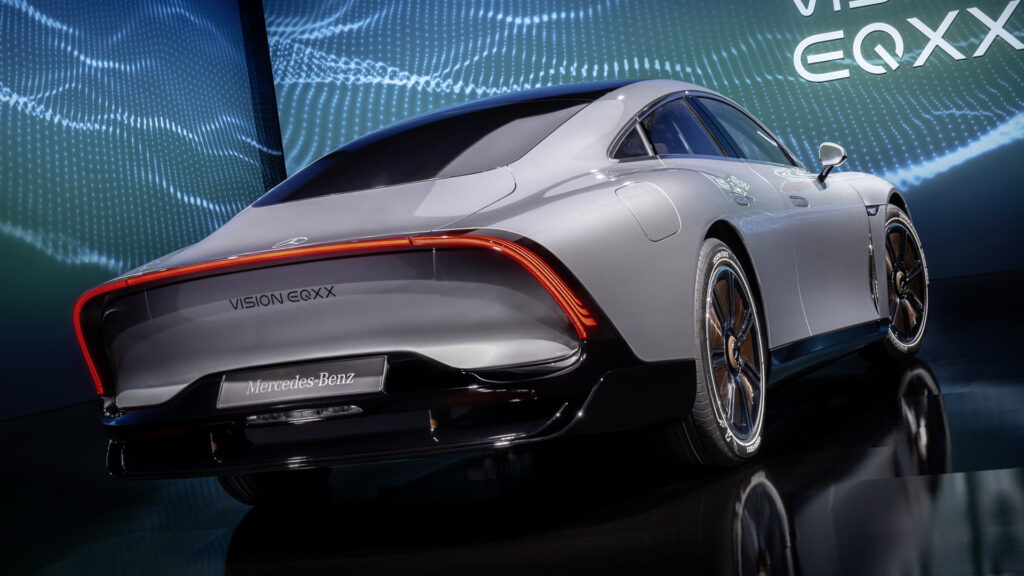- The solution would allow vehicles to use fully enclosed wheels to improve aerodynamics.
- Water cooling could be used to ensure the brakes don’t get too hot.
Mercedes-Benz is looking to reimagine how mechanical brakes work on electric vehicles and has developed a system that shifts the brakes in-board, reducing unsprung mass along with other benefits.
Engineers from the German carmaker say that the regenerative braking systems of EVs can handle 98% of braking scenarios, meaning mechanical brakes are only necessary in emergencies when maximum braking force is required. With this in mind, engineers have developed a system where the actual brakes are located inside the motor transmission unit.
Read: Mercedes Details New CLA’s Two EV And Three Hybrid Powertrains
By moving the brakes in-board, up to 200 lbs of unnecessary weight from the corners of a vehicle could be shifted more centrally, improving handling. It would also allow for fully-enclosed wheels to be used, boosting aerodynamics and improving range. These new-age brakes work slightly differently than normal ones.
A circular brake pad is mated to the driveshaft, and two discs would clamp against it. Small trays could then be implemented to catch all the brake dust. As the brakes are fully enclosed within the motor transmission unit, they would get very hot, with Mercedes-Benz potentially using water cooling to solve this problem.

The system wouldn’t only work on dual-motor EVs with drive units at the front and rear axles. Mercedes says it would mount the brakes to the center of the front axle for EVs that only send power through the rear wheels. Engineers believe the in-board brakes can last the lifetime of a vehicle, meaning they won’t need to be serviced or replaced.
While Mercedes-Benz continues to develop and test the system, it has yet to confirm its production intentions. Should the system prove up to the task of lasting the lifetime of an EV, then it would be a no-brainer to introduce it for the brand’s future EVs.








